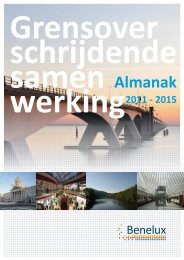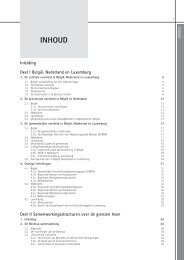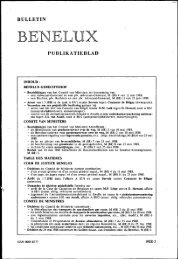The North Seas Countries' Offshore Grid Initiative - Initial ... - Benelux
The North Seas Countries' Offshore Grid Initiative - Initial ... - Benelux
The North Seas Countries' Offshore Grid Initiative - Initial ... - Benelux
You also want an ePaper? Increase the reach of your titles
YUMPU automatically turns print PDFs into web optimized ePapers that Google loves.
5.1.5 Comparison of Costs and Calculated Benefits of both <strong>Grid</strong><br />
Designs<br />
<strong>The</strong> comparison of costs and benefits between the radial and meshed grid designs is<br />
carried out using readily quantifiable values and as such is seen to be a narrow<br />
assessment of the relative merits of the options considered. <strong>The</strong> value associated with the<br />
non-quantifiable or less readily available costs and benefits are, for the purposes of this<br />
discussion, not considered.<br />
In accordance with the assumptions used and the agreed scope of the study, the level of<br />
wind generation and their geographical locations in 2030 have been stipulated and the<br />
evaluation is therefore focused on the comparison of network design options.<br />
<strong>The</strong> separate assessment of whether it is economic to connect the OWPPs as specified in<br />
the Reference Scenario for 2030, or what level of offshore wind generation is optimum, is<br />
not addressed in this evaluation. <strong>The</strong> starting position for this economic assessment is<br />
therefore that the specified OWPPs are deemed connected and costs associated with<br />
providing the OWPPs with connections need to be excluded from this assessment. <strong>The</strong><br />
default design configuration for the integration of the OWPPs was assumed using a radial<br />
design configuration. Under the exercise the simple approach was chosen to assume that<br />
the connection costs of the offshore wind parks in the radial case are the reference costs<br />
for connections applicable in both cases. <strong>The</strong>se costs are therefore subtracted from the<br />
totals of both designs.<br />
In reality, some wind parks in the meshed design will be connected partly through direct<br />
links to shore and partly through interconnectors, resulting in a possible reduction of<br />
connections to shore. By choosing to subtract the higher reference connection costs from<br />
the overall meshed design costs, the analysis takes account of this optimisation.<br />
As stated in Section 5.1.4, the benefits that were derived relate to all new grid build other<br />
than the connections of new generation and demand.<br />
<strong>The</strong> annualised values (annuities) associated with the two network designs are used to<br />
carry out the evaluation. This method is appropriate for the comparison of the relative<br />
economic position of competing alternatives. Given that the way the individual network<br />
designs will be developed is not known at this stage, this method allows the comparison<br />
of economic merits without addressing the issue of the phased development of the<br />
individual networks and the associated phasing of capital expenditure. As such, the<br />
method is suitable to compare competing alternatives, but should not be interpreted as a<br />
means of conducting an investment appraisal.<br />
In order to compare the capital investment costs of each grid design, presented in Section<br />
5.1.3, with the annual production cost savings calculated for 2030, it is necessary to<br />
express the costs as annuities. Full amortisation with an asset life of 40 years and a<br />
discount rate of 6% were assumed for this purpose.<br />
Page 50 of 142










